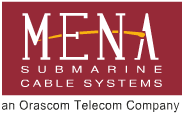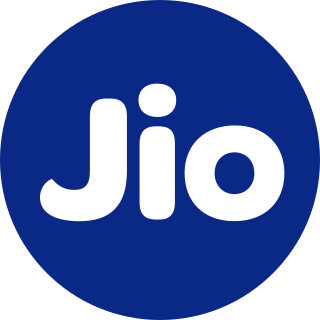
The telecommunication infrastructure of Singapore spans the entire city-state. Its development level is high, with close accessibility to the infrastructure from nearly all inhabited parts of the island and for all of the population, with exceptions. Today, the country is considered an international telecommunications hub, an achievement that was driven by Singapore's view that high-quality telecommunications is one of the critical factors that support its economic growth.

The South Africa Far East cable is an optical fiber submarine communications cable linking Melkbosstrand, South Africa to Penang, Malaysia.
Fibre-optic Link Around the Globe (FLAG) is a 28,000-kilometre-long fibre optic mostly-submarine communications cable that connects the United Kingdom, Japan, India, and many places in between. The cable is operated by Global Cloud Xchange, a subsidiary of RCOM. The system runs from the eastern coast of North America to Japan. Its Europe–Asia segment was the fourth longest cable in the world in 2008.
Global Cloud Xchange (GCX) is a company which provides network services for enterprises, new media providers and telecoms carriers. In September 2022, it was acquired by 3i Infrastructure for $512 million.
SEA-ME-WE3 or South-East Asia - Middle East - Western Europe 3 is an optical submarine telecommunications cable linking those regions and is the longest in the world. Completed in late 2000, it is led by France Telecom and China Telecom, and is administered by Singtel, a telecommunications operator owned by the Government of Singapore. The Consortium is formed by 92 other investors from the telecom industry. It was commissioned in March 2000.

South East Asia–Middle East–Western Europe 4 is an optical fibre submarine communications cable system that carries telecommunications between Singapore, Malaysia, Thailand, Bangladesh, India, Sri Lanka, Pakistan, United Arab Emirates, Saudi Arabia, Egypt, Italy, Tunisia, Algeria and France. It is intended to be a complement to, rather than a replacement for, the SEA-ME-WE 3 cable.

Oman Telecommunications Company (Omantel) is the first telecommunications company in Oman and is the primary provider of internet services in the country. The government of Oman owns a 51% share in Omantel.
Raajjé Online (ROL) is a broadband internet service provided by Focus Infocom Private Limited.
Reach North Asia Loop (RNAL) is a multi-terabit intra-Asia self-healing submarine telecommunications cable system, connecting the principal cities in Asia.
Europe India Gateway (EIG) is a submarine communications cable system that connects the U.K., Portugal, Gibraltar, Monaco, France, Libya, Egypt, Saudi Arabia, Djibouti, Oman, United Arab Emirates, and India.

Middle East North Africa (MENA) is a submarine communications cable system that is planned to connect Italy, Greece, Egypt, Saudi Arabia, Oman, and India. It will be about 9,000 kilometres (5,600 mi) long and is planned to deliver up to 5.76 terabits per second.

The West Africa Cable System (WACS) is a submarine communications cable linking South Africa with the United Kingdom along the west coast of Africa that was constructed by Alcatel-Lucent. The cable consists of four fibre pairs and is 14,530 km in length, linking from Yzerfontein in the Western Cape of South Africa to London in the United Kingdom. It has 14 landing points, 12 along the western coast of Africa and 2 in Europe completed on land by a cable termination station in London. The total cost for the cable system is $650 million. WACS was originally known as the Africa West Coast Cable (AWCC) and was planned to branch to South America but this was dropped and the system eventually became the West African Cable System.

Africa Coast to Europe (ACE) is an optical-fiber submarine cable system serving 24 countries on the Europe, west coast and south Africa, managed by a consortium of 20 members.

Gulf Bridge International (GBI) is the Middle East's first privately owned submarine cable system linking the countries bordering the Persian Gulf on a self-healing ring to each other and onward to Europe, Africa and Asia. Gulf Bridge International (GBI), both owns and operates this submarine cable asset as a carrier's carrier as well as offering a full suite of wholesale transmission, IP capacity options, and Enterprise Services. Its main headquarters are located at the Qatar Science & Technology Park in Doha, Qatar.
On June 8, 2011, a consortium of four leading telecom carriers from four countries signed the Construction and Maintenance Agreement for the new cable system — Europe-Persia Express Gateway (EPEG).

Reliance Jio Infocomm Limited, doing business as Jio, is an Indian telecommunications company and a subsidiary of Jio Platforms, headquartered in Navi Mumbai, Maharashtra, India. It operates a national LTE network with coverage across all 22 telecom circles. Jio offers 4G and 4G+ services all over India and 5G service in many cities. Its 6G service is in the works.
Asia-Africa-Europe 1 (AAE-1) is a 25,000 km submarine communications cable system from South East Asia to Europe across Egypt, connecting Hong Kong, Vietnam, Cambodia, Malaysia, Singapore, Thailand, Myanmar, India, Pakistan, Oman, UAE, Qatar, Yemen, Djibouti, Saudi Arabia, Egypt, Greece, Italy, and France. The AAE-1 cable has capacity of at least 40 terabits per second (Tbit/s) to supply the broadband market across Asia, Africa and Europe. In July 2017, it was launched for commercial services and is the longest submarine cable system in over a decade.
The Oman Australia Cable (OAC) is a 9,800 km fibre-optic submarine communications cable that entered service in September 2022, linking Oman and Australia via the Cocos (Keeling) Islands. The cable consists of three fibre pairs and had an initial design capacity of 39 terabits per second.









